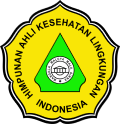HUBUNGAN PENERAPAN 5 PILAR SANITASI TOTAL BERBASIS MASYARAKAT (STBM) DAN KEJADIAN DIARE DI DESA TAMAN BARU KECAMATAN PENENGAHAN KABUPATEN LAMPUNG SELATAN
DOI:
https://doi.org/10.26630/rj.v14i2.2183Keywords:
STBM, ODF, diarrhea, family.Abstract
Diarrhea affects the death of several people around the world. In Lampung Province, the morbidity rate for all age groups tended to increase in 2005-2014. The increase in cases also occurred in South Lampung Regency from 2016-2018, and the most in Taman Baru Village, Penengah District.
The study used a cross-sectional design with a sample of 267 households, which are all households in Taman Baru Village. Primary data were collected through a survey using a questionnaire and checklist. The collected data were processed and analyzed in a bivariate manner with the help of a computer program.
The results showed a relationship between knowledge and application of the five pillars of STBM and the incidence of diarrhea. Community leaders and village officials fully support STBM activities. The people of Taman Baru Village have not carried out liquid waste management and household waste management, this factor can be the cause of the increasing incidence of diarrhea.
References
Dinas Kesehatan Kabupaten Lampung Selatan. (2017). Profil Kesehatan Kabupaten Lampung Selatan. Kalianda: Dinas Kesehatan Kabupaten Lampung Selatan.
Djarkoni, I. H., Lampus, B. ., Siagian, I. E., Kaunang, W. P. ., & Palandeng, H. (2014). Hubungan Perilaku Cuci Tangan Pakai Sabun Dengan Kejadian Diare Di Sd Advent Sario Kota Manado. Jurnal Kedokteran Komunitas Dan Tropik, 2(3), 95–98.
Entianopa, M., Marisdayana, R., Andriani, L., & Hendriani, V. (2017a). Analisis Pelaksanaan Program STBM Pilar Pertama Stob Buang Air Besar Sembarangan di Desa Ampelu Kabupaten Batanghari. Jurnal Kesehatan Terpadu, Vol. 1. https://doi.org/10.36002/jkt.v1i2.267
Entianopa, M., Marisdayana, R., Andriani, L., & Hendriani, V. (2017b). Analisis Pelaksanaan Program Stbm Pilar Pertama Stop Buang Air Besar Sembarangan Di Desa Ampelu Kabupaten Batanghari. Jurnal Kesehatan Terpadu, 1(2), 49–53. https://doi.org/10.36002/jkt.v1i2.267
Ikrimah, I., Maharso, M., & Noraida, N. (2019). Hubungan Pengelolaan Air Minum dan Makanan Rumah Tangga Dengan Kejadian Diare. JURNAL KESEHATAN LINGKUNGAN: Jurnal Dan Aplikasi Teknik Kesehatan Lingkungan, 15(2), 655. https://doi.org/10.31964/jkl.v15i2.134
Kemenkes RI. (2018). Profil Kesehatan Indonesia Tahun 2018. https://doi.org/https://doi.org/10.1002/qj
Kementerian Kesehatan RI. (2014). Peraturan Menteri Kesehatan RI No. 03 Tahun 2014 tentang Sanitasi Total Berbasis MAsyarakat.
Kody, M. M., & Landi, M. (2016). Kebiasaan Mencuci Tangan dengan Kejadian Diare pada Anak Sekolah Dasar Negeri Kota Waingapu Kabupaten Sumba Timur. Jurnal Kesehatan Primer, 1(1), 47–55.
Langit, L. S. (2016). Hubungan Kondisi Saitasi Dasar Rumah dengan Kejadian Diare pada Baita di Wilayah Kerja Puskesmas Rembang 2. Jurnal Kesehatan Masyarakat (e-Journal), 4(2), 160–165.
Mukti, D., Raharjo, M., & Dewanti, N. (2016). Hubungan Antara Penerapan Program Sanitasi Total Berbasis Masyarakat (Stbm) Dengan Kejadian Diare Di Wilayah Kerja Puskesmas Jatibogor Kabupaten Tegal. Jurnal Kesehatan Masyarakat Universitas Diponegoro, 4(3), 767–775.
Nugraheni, D. (2012). Hubungan Kondisi Fasilitas Sanitasi Dasar Dan Personal Hygiene Dengan Kejadian Diare Di Kecamatan Semarang Utara Kota Semarang. Jurnal Kesehatan Masyarakat.
Pahmi, L. (2019). Household Risk Factors For Diarrhoea Disease In Children Under Five Years Old In Indonesia. Jurnal Ilmu Kesehatan Masyarakat, 10(March), 50–58.
Prayitno, J., & Widati, S. (2018). Kajian Strategi Promosi Kesehatan Sanitasi Total. Jurnal Kesehatan Lingkungan, 11(3), 267–274.
Purwandari, R., Ardiana, A., & Wantiyah. (2013). Hubungan antara Perilaku Mencuci Tangan dengan Insiden Diare pada Anak Usia Sekolah di Kabupaten Jember. Jurnal Keperawatan, 4(2), 122–130.
Risnawaty, G. (2017). Faktor Determinan Perilaku Cuci Tangan Pakai Sabun (Ctps) Pada Masyarakat Di Tanah Kalikedinding. Jurnal PROMKES, 4(1), 70. https://doi.org/10.20473/jpk.v4.i1.2016.70-81
Rostina, & Mutiana, R. (2018). Hubungan Perilaku Penjamah Maknan dengan Keberadaan MPN Coliform pada Minuman di Angkringan Kabupaten Barru. Jurnal Sololipu : Media Komunikasi Sivitas Akademica Dan Masyarakat, 18(2), S-102.
Seupaul, R. A. (2019). Diarrhea Red flags Anatomic essentials.
Syam, S., & Asriani, A. (2019). Penerapan Sanitasi Total Berbasis Masyarakat (Stbm) Pilar 1 Stop Buang Air Besar Sembarangan (Stop Babs) Dengan Kejadian Penyakit Diare Di Kelurahan Lakkang Kecamatan Tallo Kota Makassar. Sulolipu: Media Komunikasi Sivitas Akademika Dan Masyarakat, 19(1), 109. https://doi.org/10.32382/sulolipu.v19i1.1035
Utomo, A. M. dkk. (2013). Hubungan Perilaku Cuci Tangan Pakai Sabun (CTPS) Dengan Kejadian Diare Anak Usia Sekolah Di Sdn 02 Pelemsengir Kecamatan Todanan Kabupaten Blora. Jurnal Keperawatan, 6(1), 1–10. https://doi.org/10.1007/s11340-009-9279-9
Yushananta, P., Ahyanti, M., & Hasan, A. (2018). Sanitasi Total Berbasis Masyarakat di Desa Muara Putih Kecamatan Natar Kabupaten Pesawaran. Sakai Sambayan Jurnal Pengabdian Kepada Masyarakat, 2(2), 76. https://doi.org/10.23960/jss.v2i2.79
Yushananta, P., & Usman, S. (2018). The Incidence of Diarrhea in Babies Affected through the Cleanliness of Eating Utensils and Hands. Journal of Medical Science And Clinical Research, 6(9). https://doi.org/10.18535/jmscr/v6i9.137
Downloads
Published
How to Cite
Issue
Section
License
Copyright (c) 2021 Ruwa Jurai: Jurnal Kesehatan Lingkungan

This work is licensed under a Creative Commons Attribution-NonCommercial 4.0 International License.

Ruwa Jurai: Jurnal Kesehatan Lingkungan is licensed under a Creative Commons Attribution-NonCommercial 4.0 International License.
Authors who publish with this journal agree to the following terms:
- Authors retain copyright and grant the journal right of first publication with the work simultaneously licensed under a Creative Commons Attribution-Non Commercial License that allows others to share the work with an acknowledgment of the work's authorship and initial publication in this journal.
- Authors are able to enter into separate, additional contractual arrangements for the non-exclusive distribution of the journal's published version of the work (e.g., post it to an institutional repository or publish it in a book), with an acknowledgment of its initial publication in this journal.
- Authors are permitted and encouraged to post their work online (e.g., in institutional repositories or on their website) prior to and during the submission process, as it can lead to productive exchanges, as well as earlier and greater citation of published work.









